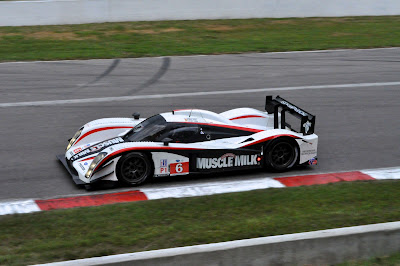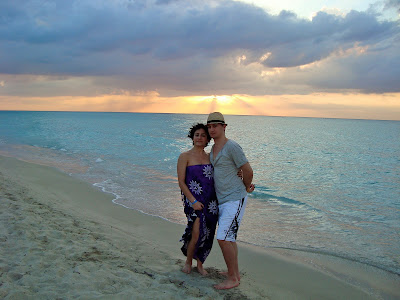Photo manipulation is a great tool that has sprung forward since the advent of the computer. Today, there are not many photographs which are left unaltered. Photo manipulation allows the photographer to get their message across much more vividly and effectively. Simple things like changing the photo from colour to black and white, grey-scale, or sepia have a profound effect on the photograph's story. Photo manipulation can be used very effectively to alter the emotions of those who are looking at it.
Motorsports have been around ever since the car was first invented. It has always been man's obsession to make a car go fastest around a track, or from point A to point B. For ever style of car, there is a form of motorsport to go with it. There is Rallying, Formula 1, NASCAR, and Sports Car racing. I have always been fond of motorsports and hope to be able to weave this dangerous and intricate sport into my career in some form or another.
Earlier this summer, I went to the only Canadian stop of the American Le Mans Series, at Mosport International Raceway. At this race there we're highly modified sports cars such as Ferraris, BMWs, Jaguars, Porsches, and Ferraris. However, this Aston Martin prototype car caught my eye with it's beautiful styling and caught my ears with the most magnificent noise a car has ever made.
 |
Muscle Milk Aston Martin Coupe. Photo Credit: Taylor Strawbridge
|
Above is the original photograph I took at the side of the track. Everything except the car is slighty blurry so as to give the viewer a sense of the speed at which this car was moving. The photograph was taken at a shutter speed of 1/500 of a second.
 |
| Muscle Milk Aston Martin Coupe. Photo Credit: Taylor Strawbridge |
Here I increased the saturation and vibrancy of the picture using Apple Aperture. I used both of these tools to bring out more colour into the shot, this makes the car and it's surrounding seem more alive than they appeared in the original photo and bring it closer towards the conditions in which the car would have looked if you were standing here when it went by.
In April, following my final exams, my girlfriend and I spent a week in Cuba. We relaxed on the beach, I went swimming in the ocean for the first time (so salty!), and we went on a tour of Havana. If you haven't had the opportunity to visit Cuba I suggest you go at least once, as it's truly a beautiful country. The one thing my girlfriend and I tried to do every evening was to watch the sunset.
 |
| Cuban Sunset. Photo Credit: Unknown |
Here is the original photograph, taken by a friendly tourist, shows all the beautiful blues of the Atlantic Ocean, and the vibrant reds of the sunset in the distance. Even this photo cannot do the amazing colours justice.
 |
| Cuban Sunset: Photo Credit: Unknown |
In the altered photograph I applied the sepia tone to the entire photograph to make the photo look like it was taken 100 years ago. I sharpened the photograph to make the details and edges "pop", it gives tremendous detail to the sand and ocean that you can't see in the original photograph. Finally, I increased the elements of red in the photograph to make it seem as though the photo was taken in brighter conditions that they actually were.
Looking back at the photographs I have taken was a fun distraction from the monotony of school work, especially as we move towards exams and major assignments. It makes me look forward to next summer, and some of the plans I have already made, more vacations and Montreal for the Formula 1 race next year!
Thank you all for reading my post!
Taylor Strawbridge
















